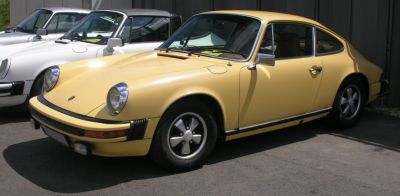 1982 BMW 3 Series Coupe (E30) Dimensions, Size & Specs
1982 BMW 3 Series Coupe (E30) Dimensions, Size & SpecsMeasurements of the 1982 BMW 3 Series Coupe, engineered for optimal performance and comfort
| Dimensions | |
|---|---|
| Length: | 4325 mm170.3 in14.2 ft |
| Width: | 1625-1645 mm64.0-64.8 in5.3-5.4 ft |
| Height: | 1380 mm54.3 in4.5 ft |
| Trunk Capacity: | 404 liter14.3 cu ft |
| Weight Specifications | |
| Curb Weight: | 990-1235 kg2183-2723 lbs |
| Maximal permitted Weight: | 1450-1695 kg3197-3737 lbs |
| Roof Load: | 75 kg165 lbs |
| Tire Specifications | |
| Rims Sizes: | 14-inch rims:
|
| Tire Sizes: |
|
The BMW 3 Series Coupe (E30), produced from 1982 to 1986, embodies the classic BMW design language of the early 1980s, delivering an iconic coupe experience. This model features a compact yet sporty silhouette, with an overall length of 4325 mm (170.3 inches) and a width ranging between 1625 mm to 1645 mm (63.98 to 64.76 inches), complementing its sleek and athletic profile. Its height measures at a modest 1380 mm (54.3 inches), contributing to its low stance and enhanced aerodynamic posture.
Weighing between 990 kg and 1235 kg (2183 to 2722 lbs) curb weight depending on the specific variant, the E30 coupe demonstrates a relatively lightweight construction that supports agile handling and spirited driving dynamics. The maximum weight ranges from 1450 kg to 1695 kg (3197 to 3735 lbs), reflecting its load-bearing capabilities.
Practicality is maintained with a luggage capacity of 404 liters (14.3 cubic feet), offering enough space for daily needs or weekend trips, while the roof load capacity stands at 75 kg (165 lbs), enabling additional cargo options such as roof boxes or racks.
The 3 Series E30 Coupe rides on 14-inch rims, with sizes including 5.5J x 14 and 14.5J x 14, paired with tire sizes commonly at 195/60 R14 or 175/70 R14, balancing comfort, grip, and responsive handling characteristics that were typical of BMW’s engineering focus during this era.
Overall, the BMW 3 Series Coupe (E30) from 1982 to 1986 remains a celebrated model for enthusiasts, blending compact dimensions, lightweight agility, and refined BMW styling, making it a timeless classic in the realm of sporty coupes.
Discover the standout features that make the 1982 BMW 3 Series Coupe a leader in its class
Have a question? Please check our knowledgebase first.
The BMW 3 Series Coupe (E30) produced between 1982 and 1986 has a length of 4325 mm (170.3 inches). The width varies between 1625 mm to 1645 mm (63.98 to 64.76 inches) depending on the model and trim. The height of this coupe stands at 1380 mm (54.33 inches). These compact and balanced dimensions contribute to the E30's sporty yet manageable driving character.
The curb weight of the BMW 3 Series Coupe (E30) ranges from 990 kg to 1235 kg (2183 to 2722 pounds). The variation in weight depends on specific trims, engine configurations, and optional equipment installed. The lightweight nature of the E30 was key in delivering a responsive driving experience, making it a widely praised classic in the compact coupe segment.
The maximum weight, or gross vehicle weight, of the BMW 3 Series Coupe (E30) varies between 1450 kg and 1695 kg (3197 to 3734 pounds). This figure represents the maximum total weight of the vehicle, including passengers, cargo, fuel, and the car itself. Adhering to this limit is important for safe operation, optimal braking, and suspension performance.
The BMW 3 Series Coupe (E30) offers a luggage capacity of 404 liters (14.26 cubic feet). This amount of trunk space is quite generous for a coupe of this era and class, providing enough room for daily essentials, weekend trips, or shopping. The practical luggage space complements the sporty and compact nature of the E30 coupe.
The roof load capacity of the BMW 3 Series Coupe (E30) is rated at 75 kg (165 pounds). This means the roof can safely carry additional cargo such as roof racks, luggage boxes, or sporting equipment without compromising vehicle stability or safety. It's a useful feature for owners needing extra storage during travel or outdoor activities.
Yes, the BMW 3 Series Coupe (E30) can comfortably fit into a standard residential garage. With a length of 4325 mm (170.3 inches) and an average width of approximately 1635 mm (64.37 inches), it is smaller than many modern vehicles. Standard garage dimensions typically range from 2400 mm to 3000 mm in width and 4800 mm to 6000 mm in length, so the E30 leaves ample room for maneuvering, opening doors, and storage alongside the vehicle.
Compared to its predecessor, the E21 (produced 1975-1981), the E30 is slightly larger and more refined in dimensions. The E21 had a length around 4315 mm (169.7 inches), so the E30's 4325 mm (170.3 inches) length is marginally longer. The width of the E30 increased from about 1600 mm to approximately 1625-1645 mm, enhancing interior space and road presence. This growth translates into improved comfort, aerodynamics, and stability without compromising the compact sporty character of the coupe.
The BMW 3 Series Coupe (E30) was competitively sized against other compact luxury coupes of the early 1980s. For instance, the Mercedes-Benz 190E coupe and Audi Coupé typically featured similar lengths close to 4.3 to 4.4 meters (169 to 173 inches), and widths in the 1600-1650 mm (63 to 65 inches) range. The E30 distinguished itself by combining compact exterior dimensions with excellent use of interior space, sporty handling, and lightweight design, making it a leader in its segment during that era.
The original BMW 3 Series Coupe (E30) came equipped with rim sizes of 5.5J x 14 inches or 14.5J x 14 inches, paired with tire sizes of 195/60 R14 or 175/70 R14. These tire and rim dimensions offered balanced handling, ride comfort, and grip suitable for both sporty driving and daily use. The relatively narrow tire width by modern standards helped maintain a precise steering response and excellent fuel efficiency, while the 14-inch rims matched the car's compact styling and suspension setup.
The BMW 3 Series Coupe (E30) is considered iconic due to its combination of timeless design, balanced driving dynamics, and engineering refinement that defined BMW's compact sports coupe segment in the 1980s. It introduced improved aerodynamics, better weight distribution, and advanced suspension setups. The E30 range also included motorsport-inspired models like the M3, which became legendary. Its success established a strong enthusiast following and set the foundation for successive generations, cementing its legacy as a benchmark for sporty coupes.
Discover similar sized cars.

| Production: | 1976 |
|---|---|
| Model Year: | 1976 |
| Length: | 4291 mm168.9 in |
| Width: | 1610 mm63.4 in |
| Height: | 1340 mm52.8 in |
